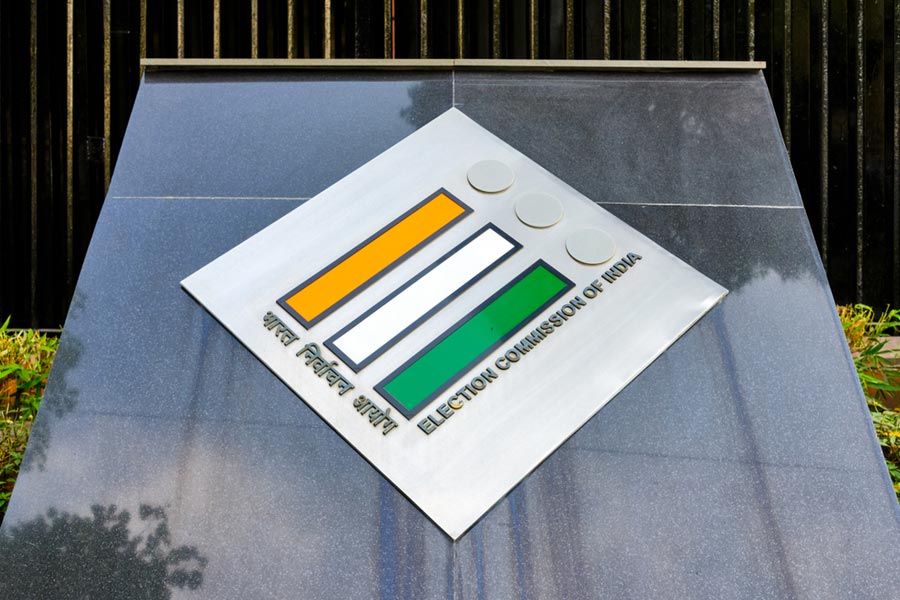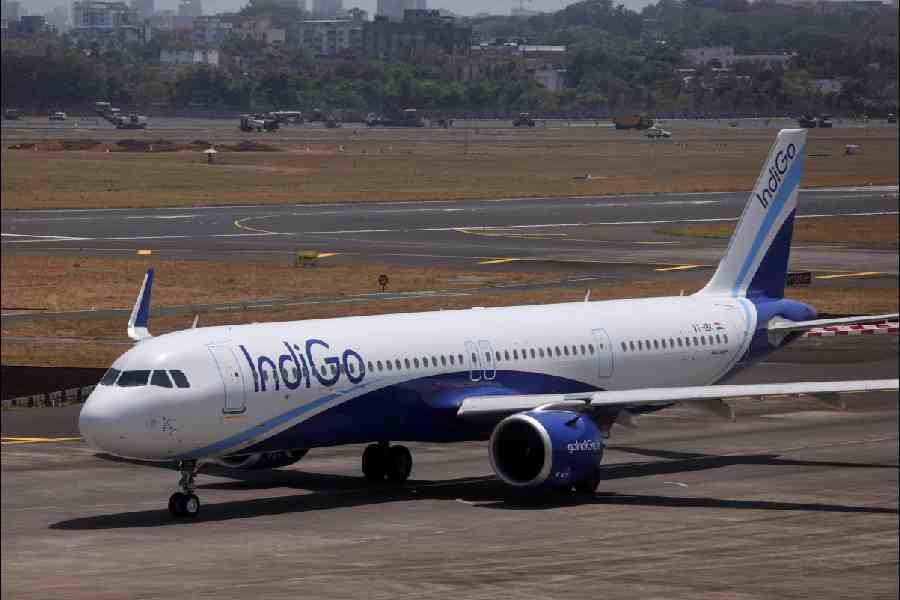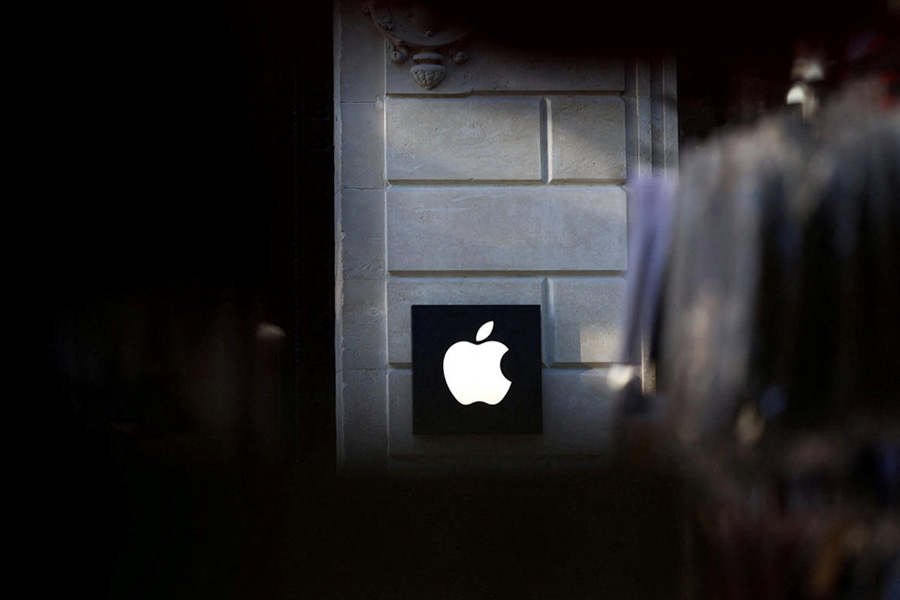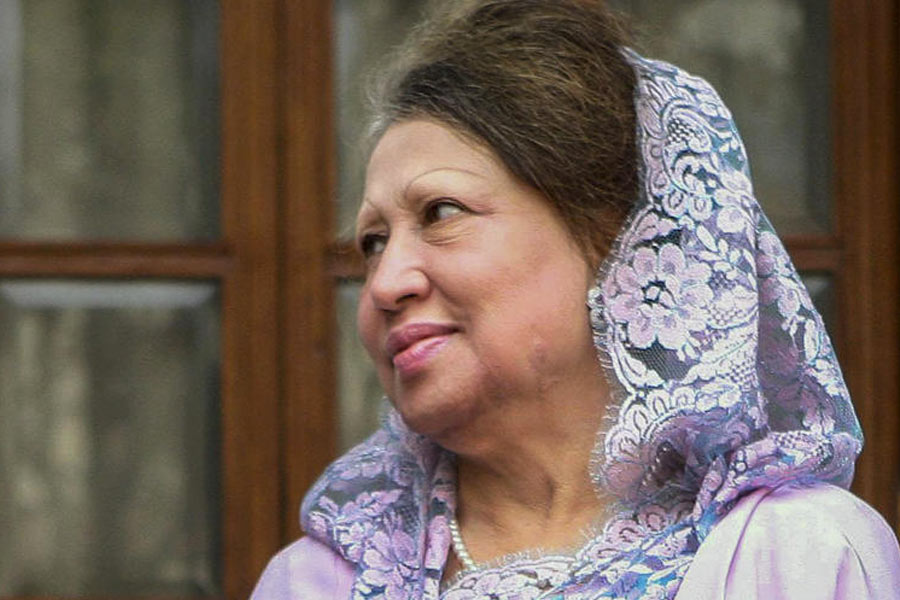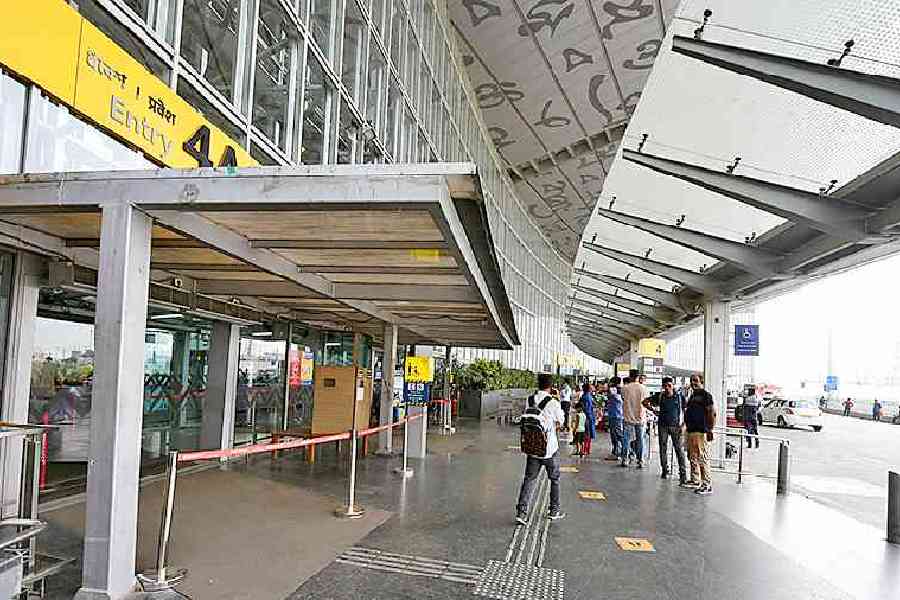 |
| S Ramadorai with Ratan Tata at the launch of The TCS story... and beyond. Picture by Subhabrata Das |
Mumbai, Sept. 19: The life of any big corporation is full of twists and turns – a set of fortuitous circumstances intertwined with the charisma of its towering pioneers whose idealism and self-belief are punctuated by seemingly capricious decisions that turn out right in the end.
S. Ramadorai catches it all in his book – The TCS story... and beyond published by the Penguin Group– which tells the story of the country’s largest software exporter and its unremitting quest for excellence with rare candour and wry humour.
At a well-attended book launch ceremony here today, Tata group chairman Ratan Tata said: “I was briefly in TCS before Ram joined the company,” raising a titter in the audience.
“TCS basically was a company that put documents into punch cards and back. It had very little international exposure back then. Mr Kohli built TCS in the formative years and then Ramadorai appeared after several years in the US and transformed the company. The company worked very quickly, without much fuss. A great deal of the credit goes to Ram and Kohli for making it happen in the first place. Chandra (N. Chandrasekaran, the present CEO) will continue to take the company forward. Everywhere we go overseas, Tata quite often means TCS,” added Tata, who is the chairman of TCS.
“TCS has been a shy company and very often recognition meant a pat on a colleague’s back,” said Ramadorai. “On occasions, we have shared some of our experiences. Rather than leave the story untold, I felt that we had a story to tell.”
The effort was to drudge up old tales from the collective memory bank of a number of 60-year-olds. Engineers can really sweat a long-forgotten event for details and Ramadorai admitted it had taken some effort to cram it all into a book of less than 300 pages.
How it all began
The story of TCS began with a fateful decision in the mid-sixties: Colonel Sawhney, “brother-in-law, aide and confidant” of JRD Tata floated a proposal to pool the Tata group’s need for data processing in a single business unit. The West had just started to invest in commercial mainframe computers to deal with inventories and payrolls. JRD latched on to the idea and cleared the plan for a data processing centre. Tata Sons – the group’s holding company – invested all of Rs 50 lakh in the venture.
But to plan is one thing, to execute quite another.
The behemoths within the Tata group treated the fledgling with disdain and were loath to hand over their data processing work to it. Most wanted it to only deal with some tiresome shareholder accounting work. The exception was Tata Electric (now Tata Motors) which shovelled a lot of sophisticated work to the new entity.
By 1968, the data processing unit finally had a name -- Tata Consultancy Services -- and Fakir Chand Kohli, an MIT-educated technocrat at Tata Electric, was put in charge. Start-up companies need to be guided carefully through the shoals of internal prejudice and a regulatory minefield and Kohli – who is labelled in the book as a “benevolent dictator” – was just the man to get the idea off the ground.
Ramadorai joined TCS the following year, fresh out of the University of California at Los Angeles (UCLA) and a short stint with National Cash Register (NCR) in the US. Chucking up a $12,000-a-year job for a position as a programmer in India that paid Rs 1,000 a month -- the result of a pre-nuptial condition set by wife Mahalaxmi -- the shy Tamilian Brahmin was soon caught up in Kohli’s grand vision of igniting a computer revolution in India.
Short of orders from within the Tata group, the firm started to look for orders in places like Iran where it won projects to build inventory and stock control systems for power stations.
Soon, a couple of amazing twists in history changed the storyboard for the company. In 1973, the Indira Gandhi government enacted the draconian Foreign Exchange Regulation Act (Fera) that imposed fiendish controls on cross-border transactions. It limited how much a company could spend on importing equipment; it also restricted multinationals from holding more than 40 per cent in joint ventures in the country.
A change of government took place in 1977 and the nationalists sent names like IBM and Coca-Cola scurrying out of the country, worried that a dilution of equity in their Indian ventures would seriously compromise their intellectual property. Just as Coke’s exit threw up great opportunities for home-grown cola makers, IBM’s withdrawal opened the game for companies like TCS.
Until then, Indian programmers worked on IBM mainframes. But now the Tatas linked up with Burroughs – a leader in micro-programming and software architecture. The venture enabled TCS to send its programmers to US to help Burroughs’ clients migrate from IBM to the latter’s hardware platform. It marked the starting point in the Great Indian Outsourcing story.
The partnership with Burroughs lasted for four years. And then came the first inexplicable decision. The Tatas had applied for and managed to secure a licence to manufacture Burroughs’ equipment in India after a great deal of effort. But surprisingly, they reckoned they could not afford to take the risk of entering the computer manufacturing business. Several other Indian companies formed similar alliances and eventually almost all of then ran into the ground.
Ramadorai still believes that the decision ranks as a huge missed opportunity. “Instead of being left behind by the IT hardware revolution, India could have been at the centre of it in terms of manufacturing capabilities and hardware credentials,” he writes. Many may disagree with that notion.
Still, cutting the “umbilical cord” with Burroughs was the best thing that could happen for TCS since it turned into an entrepreneurial company. It morphed into an independent software house that handled non-Burroughs business in a Burroughs-dominant environment.
Outsourcing story
Ramadorai believes the Indian software industry was born not by design but by an “accident of history”. Blame it all on the draconian conditionalities that the government at that time imposed on equipment imports. The Tatas were allowed to import a Burroughs computer only after they agreed to export twice the value of the imported equipment over a five-year period, which was anyway inflated by a raft of import duties that added up to an astonishing 101.25 per cent!
Hard work, ingenuity and the need to pay for an imported mainframe computer laid the foundations of the software industry in India. In one sense, the US eventually got “Bangalored” because of an egregious import duty condition.
By the mid-nineties, TCS gained formidable expertise in the area of financial services winning contracts from a diverse set of customers: the Swiss National Bank and American Express. It built a custodial system for Stock Holding Corporation of India, a real-time securities settlement system for SegaInterSettle and the trading platform for the National Stock Exchange.
By September 1996, Ramadorai was propelled into the hot seat as chief executive of TCS – a $ 400 million operation -- and ushered a generational shift in its leadership style. Where Kohli had been “intellectual, authoritative and aloof”, the new boss tried to engineer debate and build consensus.
By 2002, TCS became India’s first $1-billion software company and Tata Sons started to weigh the options of a maiden flotation. Wipro and Infosys had already become the darlings of the stock markets – and were able to use stock options to retain talent. But the Tatas agonised over the decision for two years. Eventually, the issue in August 2004 became a huge success and whipped up frenzy on the markets.
As Ramadorai recalls: “We had just stepped up on a treadmill and pushed the start button – there was no getting off now.”
Great corporations are created by visionaries who can articulate an aspiration through a simple message. In the case of TCS, it was formulated in 2003: “Top 10 by 2010” – an audacious, lofty goal that galvanised the company to confront an incredible challenge. Six years later – in 2009 – TCS recorded revenues of $6 billion, finding its place on the totem pole that carried the names of giants like IBM and Accenture. It had achieved the target a year before the deadline, allowing Ramadorai to pass on the baton.
Now that the book is out and its over 40-year history has been told, TCS will finally be able to look beyond.


